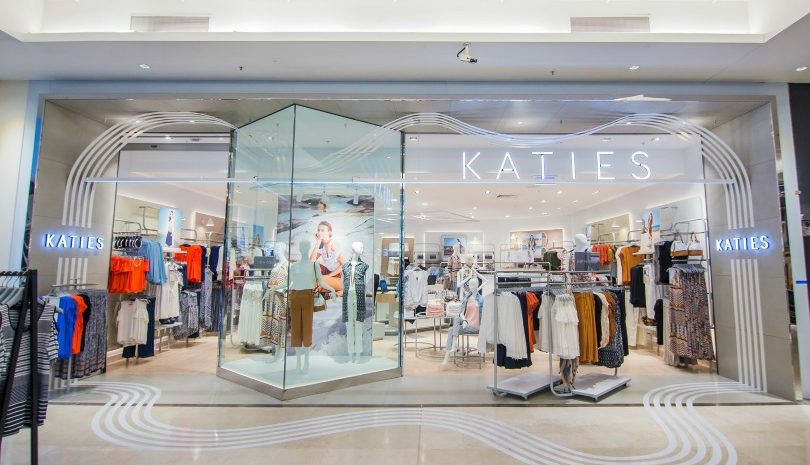Katies store adds iPads to improve customer experience

Specialty Fashion Group gave its Katies brand a facelift last week, launching a more modern logo, colour palette and Spring/Summer collection nationally, and unveiling a new store design featuring iPads in fitting rooms at the Westfield Fountain Gate shopping centre in Victoria.
The rebranding is an effort to change customers’ perception of Katies as “old and daggy” and position the iconic brand for future growth, according to SFG’s CEO Gary Perlstein. “It wasn’t a case of Katies not performing well, it was a case of how do we take the brand forward and maintain its leadership position in the market,” Perlstein said
In addition to modernising Katies’ products to appeal to a broader group of women, SFG also hired London design consultancy HMKM to develop a customer-centric store concept that focuses on experiences rather than transactions.
The Katies Fountain Gate location now features an inspiration hub, giving customers a place to browse look books, access fit guides and watch styling how-tos on iPads. They can also use the iPads to purchase items from the Katies website if they are out-of-stock instore, and they can choose to ship packages either to the store or their home address.
Instore iPads also show up in Katies’ fitting rooms, so customers can purchase items directly after trying them on, which the brand spruiks as an Australian first. This technology was added with the customer foremost in mind, according to Katies’ staff present at the Fountain Gate store opening last week.
Katies customers often shop with their children in tow and just want to get in and out of the store. Now they can go straight to the fitting room, select the items they want to try on, and a salesperson will bring the items to their fitting room. They can also purchase the products they like right on the iPad, without having to queue up.
The iPads are part of Katies’ aim to be viewed as a modern and aspirational brand. It’s a strategy that has worked before, according to Jon Bird, managing director of Labstore, a global retail and shopper marketing practice.
“When Angela Ahrendts took over as CEO in 2006, Burberry was an aging British icon. Ahrendts sharpened the offer, targeted a more youthful market, embraced digital and social, and created new advertising campaigns using more contemporary figures such as Emma Watson,” Bird said.
“Ahrendts also reinvented the retail experience – their flagship store in Regent Street in London was an example of utilising technology in an entirely new way. It was simply the coolest store in the world when it opened and flipped the idea of a retail store on its head.
“Ahrendts wanted to make it feel as if you were ‘walking into a website.’ What [she] did though was to rediscover what made Burberry great in the first place – English heritage and the classic trench coat – and show that product and that history in a way that made it relevant and desirable today. She blew the dust off the icon.”
Despite Burberry’s success, changing customer perception is never an easy task. It can be hard to anticipate how customers will react when a well-known brand decides to try something new. But Perlstein believes SFG has its finger on the pulse.
“We have 16 years of data on our Katies customers that we overlay with other demographic information and psychographic trends [to understand changing behaviour, wants and needs],” the CEO said.
The retail group has long used data to drive its brand strategy. “We are one of the few companies that has a full team of data analysts and we’ve had them in place for a decade,” Perlstein said. SFG also has Australia’s largest database of female shoppers, with over eight million customers.
Perlstein said the company will take into account customer feedback as it decides where and when to revamp other Katies stores around Australia.
Comment Manually
You must be logged in to post a comment.

No comments